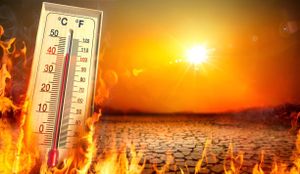For those who have always dreamed of witnessing the ethereal beauty of the northern lights, this week presents another golden opportunity. Following the recent observation of one of the most powerful solar flares recorded this solar period—a massive X7.1 flare—experts predict dazzling displays of the aurora borealis across various states of the U.S. The auroras are expected to light up the skies starting Thursday night, October 3, through the weekend. News outlets report this exciting forecast as solar activity ramps up, driven by coronal mass ejections (CMEs) from the sun.
The National Oceanic and Atmospheric Administration (NOAA) issued geomagnetic storm watches, indicating varying degrees of storm intensity, with expectations of northern lights visible down to states like Oregon and Pennsylvania. This won’t just be a flash-in-the-pan event; the geomagnetic activity promises to create frequent and vibrant auroras due to the sun nearing the peak of its 11-year solar activity, known as Solar Cycle 25.
Where should hopeful skygazers set their eyes? According to reports, ideal viewing locations stretch across the northern U.S., particularly along the U.S.-Canada border. Observers from states such as Michigan, Wisconsin, and even parts of the West Coast can expect to see the northern lights, especially on the night of October 4, when sky conditions may be optimal around midnight local time. Yet, all predictions come with caveats: changes during the trip of solar particles to Earth can affect visibility. NOAA cautions the auroras can vary from bright displays to faint glimmers, sometimes only caught with long-exposure photography.
The fascination with the northern lights, or aurora borealis, remains strong as these lights are more than just visual spectacles. They are products of complex interactions between solar particles and Earth’s magnetic field. Solar flares expel charged particles, which, when colliding with gases like oxygen and nitrogen high up in the atmosphere, generate colorful displays of light. These physical processes may occur over several miles above ground, resulting in greens, reds, and even purples illuminating the sky. Understanding the underlying science enhances the magic of the experience.
Peak aurora visibility is usually around midnight, making late-night excursions attractive for potential spectators. If you want to maximize your chances of catching this marvel, get away from city lights—light pollution significantly diminishes aurora visibility. A dark sky, especially at high elevations, creates the best backdrop for enjoying the lights. The NOAA even maintains tools, like the aurora dashboard, which helps enthusiasts track potential sightings along with real-time updates.
Why are northern lights becoming more common? NASA indicates we are moving closer to the peak of Solar Cycle 25, expected around 2025. This period of increased solar activity means more intense solar flares and CMEs, translating to heightened northern lights visibility. During particularly active episodes, sightings of the auroras have been recorded far south, reaching states where such displays are rare, like Texas—a phenomenon observed recently during earlier solar storms.
Last month’s geomagnetic storm stirred excitement when the auroras appeared over locations not typically known for such events, enchanting residents and sky-watchers alike. Many took to social media, sharing their captures of the shimmering lights. This week’s event also gained traction online, with many preparing for impromptu night trips to catch the aurora. Posts displaying radiant auroras flooded the internet as eager viewers anticipated this week’s forecast.
It’s noteworthy to mention, though, the unpredictability associated with solar activity. While advancements have been made to predict when and where auroras may be visible, complete accuracy remains elusive; meteorological conditions and light interference can significantly impact the experience—sometimes the photographs taken by smartphones seem to show more vibrant colors than what the naked eye can perceive.
For those thinking of venturing out this weekend to seek the auroras, options abound. Areas within clear viewlines of the aurora path include Alaska, Washington, and North Dakota, among others. Those farther south may have to contend with sporadic visibility, but storms this active could push the lights much closer to the equator than what’s typical. A propsed Kp index of four on specific nights indicates powerful auroral activity, potentially creating brilliant displays across vast regions.
Planning for such encounters often involves timing and location scouting. The right preparation includes checking locally for the clearest skies, optimal sunset timings, and accurate aurora forecasts. The upcoming nights are not just about spotting the lights; it's about community and shared experiences as people gather to enjoy nature’s light show.
Experts recommend photographing the auroras after adjusting camera settings to allow for longer exposure times. While smartphones may suffice, dedicated cameras with higher ISOs produce stunning results, capturing the dynamic colors of the aurora—so bring your gear! After all, whether through the eye or lens, experiencing the northern lights can evoke awe and wonder, with countless memories to last long after the glow fades from the night sky.
A thriving interest around the northern lights encourages enthusiasts to appreciate their majesty and beauty, making such experiences more accessible to citizens across the country. With more solar storms expected, the coming months look promising for aurora lovers who want to immerse themselves in the breathtaking dance of colors and lights across the store. Who knows just how far this extended auroral belt will reach? Join the excitement, stay informed, and ready your cameras—the northern lights are awaiting.



